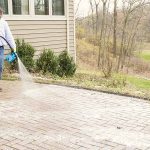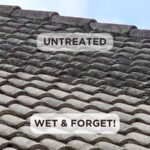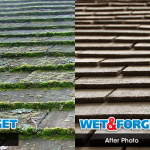How to Clean Brick & Stucco With Wet & Forget
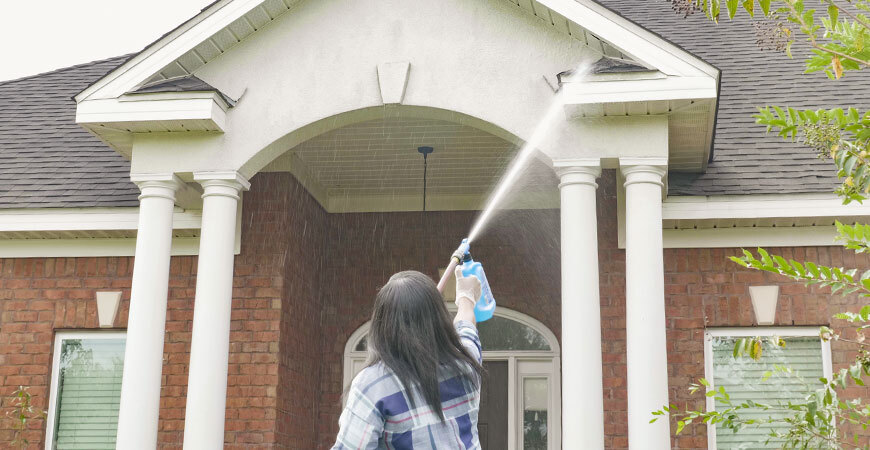
Rough, textured surfaces such as stucco or brick can be tough to clean. Here we’ll cover how to remove organic growth from stucco and brick with Wet & Forget.
What are the different types of stucco finishes?
Stucco finishes usually have a range of aggregate sizes to choose from, including smooth, fine, medium, and coarse.
This affects the overall look and feel of the final surface. Your home’s exterior will look different depending on the size of aggregate.
Here are three of the most common types of stucco finishes –
Acrylic-based finishes – An acrylic finish contains acrylic with an aggregate added for texture. The material resembles a high-quality exterior paint but is sticky and thicker.
An applied acrylic-based finish is usually 1/16 inch thick, for most applications.
Cement-based Finishes – A cement-based finish is made of white Portland cement. A white stucco base is ideal if you wish to add color to the final coat.
A cement-based finish is usually 1/8 inch thick but can be applied thinner if you prefer a smoother finish.
Synthetic Finishes – A synthetic finish is similar to an acrylic finish, and usually contains acrylic as a component.
Unlike a traditional, hard-coat stucco, which absorbs water and then releases it, a synthetic finish is formulated to keep moisture from entering the surface.
Should I paint my stucco walls?
No. A stucco wall consists of several layers. A colored stucco wall will have a color pigment as an addition to the final coat.
Stucco is porous so moisture easily evaporates from the surface.
During construction, stucco is applied over a waterproof membrane. The membrane is placed between the stucco and the interior structure to prevent the entrance of moisture.
If you paint stucco, it will interfere with the breathability of the surface, causing moisture to become trapped. This will encourage mold and mildew growth, and cause the paint to peel and chip.
In extreme cases, excess water will accumulate at the base of the wall, which encourages bacterial growth and structural rot.
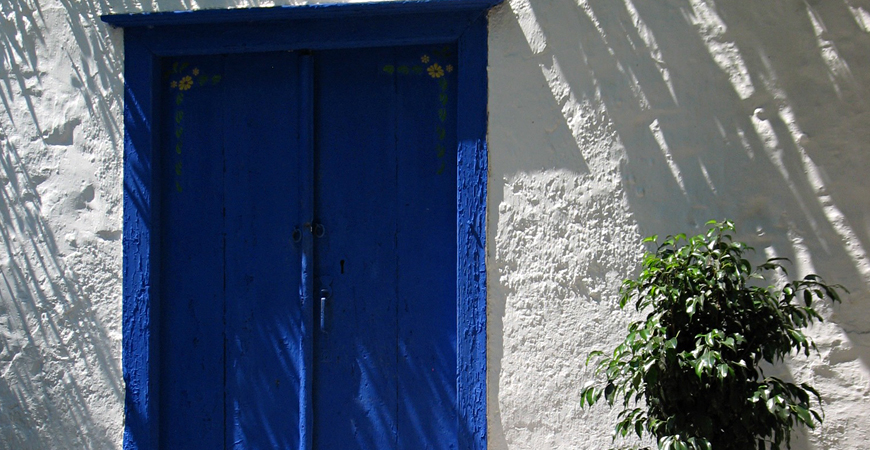
What are the different types of brick?
Brick masonry is available in a wide range of colors, shapes, and sizes. Clay bricks are a standard, economical option. Bricks made of cement or lime are also available.
Handmade bricks are perfect if you prefer an authentic or weathered surface. To create handmade bricks a worker rolls the clay in sand and then tosses it into the mold.
Handmade brick come in standard and non-standard sizes to create a charming, casual look. Handmade bricks are more costly than machine-made but the attractive texture and appearance is worth the price.
Machine-made bricks provide a clean, smooth finish to your home’s exterior. This material is usually uniform in shape and less expensive when bought in quantities of one thousand.
Machine-made brick is manufactured by the wire-cut method. The clay is extruded into a long column and then cut into sections with a wire.
It is then dried and fired in a kiln. Machine-made bricks are even in shape giving a modern, orderly appearance.
Reclaimed bricks are bricks from a pre-existing structure. They may be several decades old and considered vintage or antique.
Reclaimed bricks are often repurposed in historic areas for new builds or additions. A reclamation yard is a good source for reclaimed bricks.
Unfortunately, it may difficult to find enough matching reclaimed brick to complete an entire house. If you like the appearance of reclaimed brick, consider using it as a garden path or front walkway.

Are stucco and brick susceptible to mold and mildew stains?
Yes. If you see green or black stains on your stucco or brick, this may be mold and mildew. Mold and mildew often occur on the north-facing or shaded side of a home.
Additionally, the more porous the brick, the more susceptible it is to mold and mildew.
Why? Brick that is porous, has cracks, or crumbles can retain moisture easily. Retained moisture encourages growth such as mold and mildew to take hold and thrive.
This also applies to crumbled or cracked mortar as well.
How can I remove organic growth on brick and stucco?
Get rid of those ugly green and black stains on your stucco and brick with Wet & Forget Xtreme Reach™ Hose End. Here’s how:
- Connect the Xtreme Reach™ Hose End nozzle to your garden hose.
- Choose a spray tip for your application: FAN TIP or JET TIP.
- The JET TIP is best for height and distance. The FAN TIP disperses Wet & Forget in a horizontal fan pattern, which makes for faster application on large surfaces.
- Turn on the water, turn the dial to ‘ON’ and spray.
- When done, turn the dial to ‘WATER’ and rinse away any overspray on windows or landscape plants.
- Turn off the water and allow the flow to diminish to release water pressure.
- Remove the bottle from the garden hose.
- That’s it!
Wet & Forget Xtreme Reach™ Hose End is an easy spray-and-leave outdoor cleaner that stamps out unsightly mold and mildew stains on brick and stucco – no scrubbing required!
Plus the powerful nozzle sprays the product up to 30 feet high so you can clean high up surfaces while standing on the ground. No more ladder climbing!
Did you know?
When shopping for brick there are three grades to choose from:
- SW (Severe Weathering) – The brick is able to withstand freeze and thaw cycles.
- MW (Moderate Weathering) – The brick is tolerant to frost and freezing. Often used for outdoor walls.
- NW (No Weathering) – This grade is for indoor use only.
Bonus tip: Routinely inspect stucco for cracks or chips. If you find issues, your stucco may need repairs or re-coating of new stucco to match.


